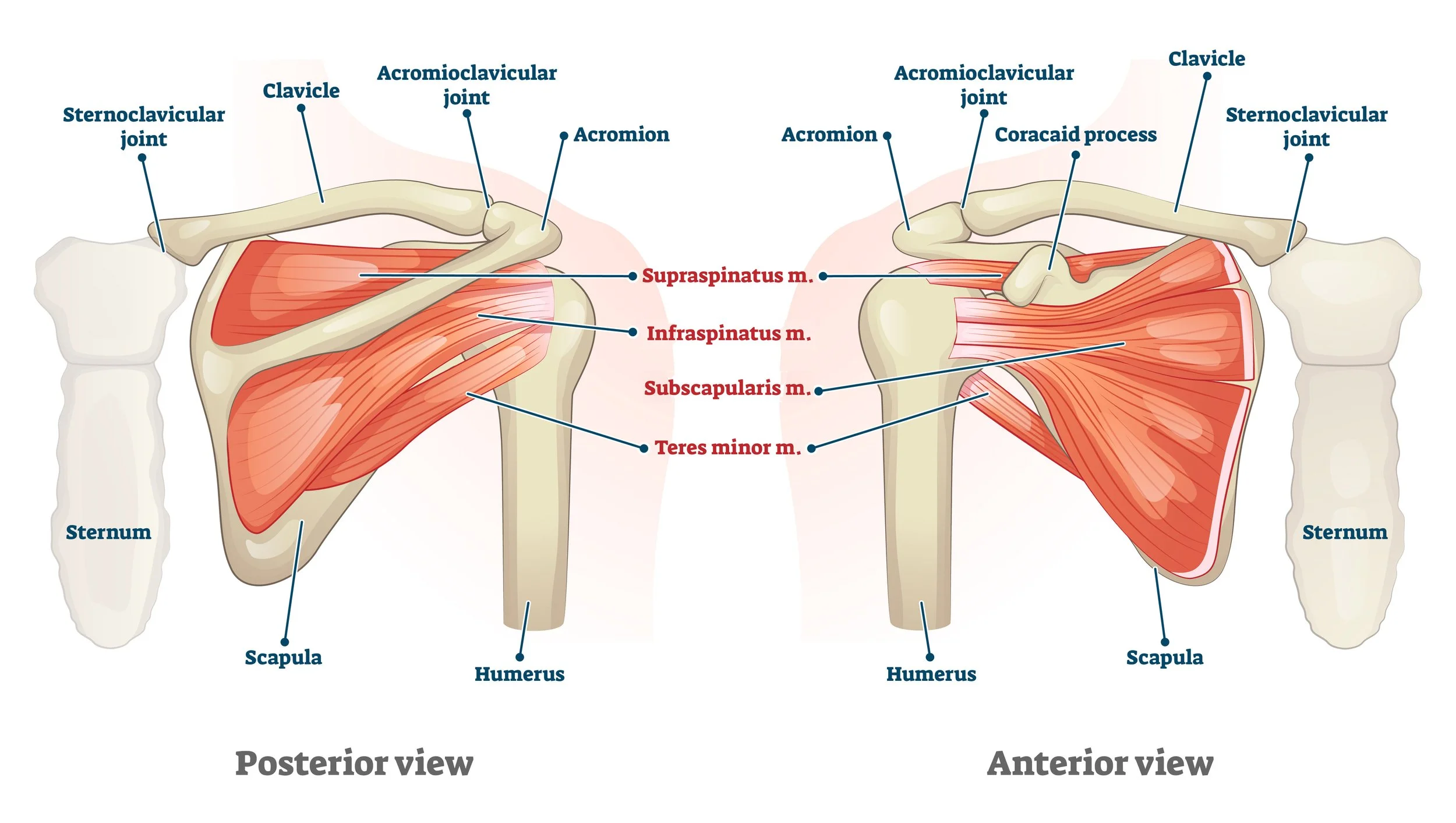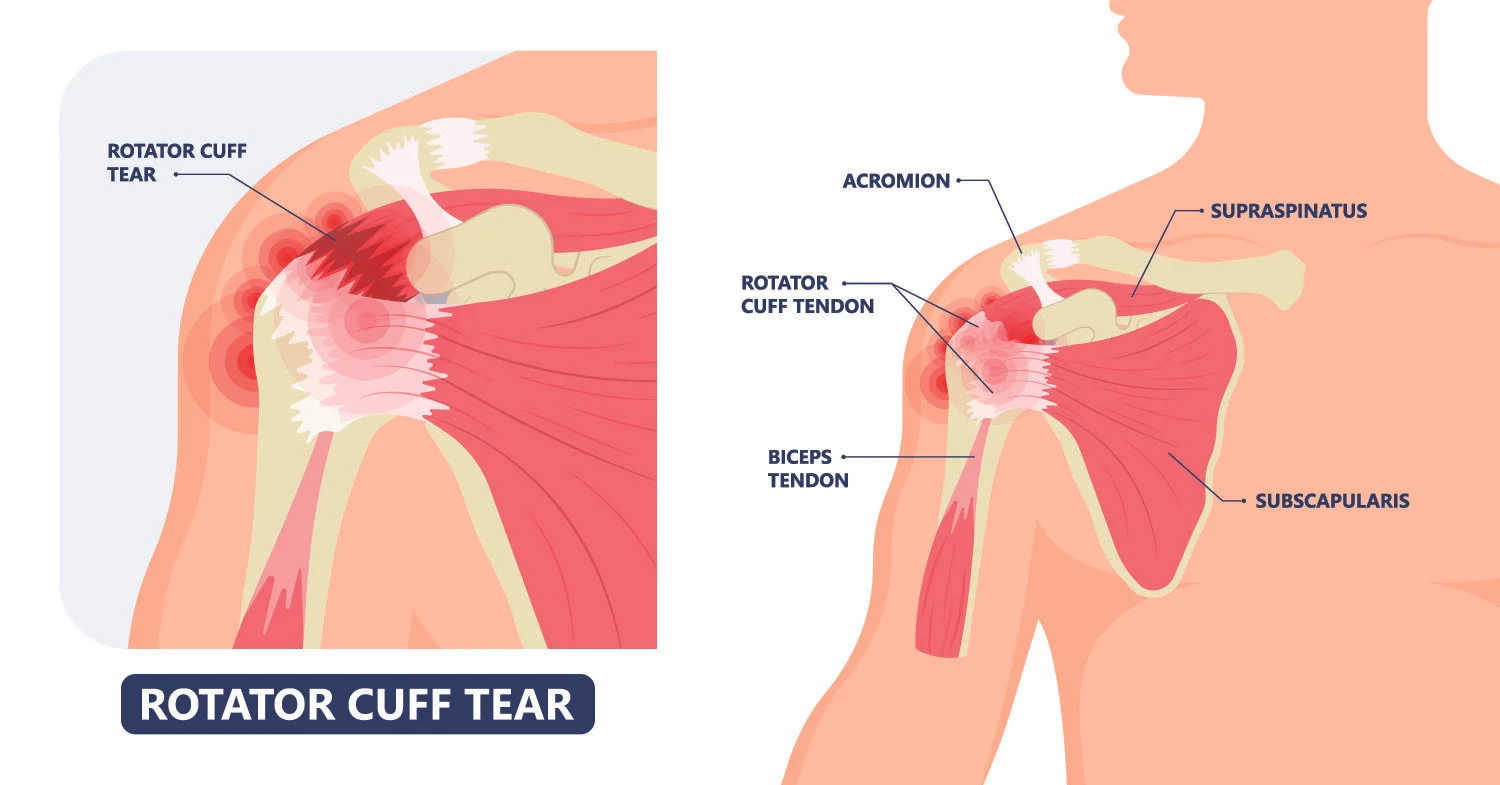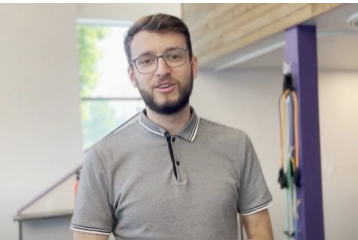What is A rotator Cuff TEar?
What is injured in a torn rotator cuff?
A rotator cuff tear could consist of an insult or injury to any of the following muscles and/or their tendons. A rotator cuff tear can be a chronic injury that develops over time or a trauma such as a sudden fall. In an overuse injury, the soft tissues may start to fray, often caused by repeated activities. A tear can be partial or complete, with the muscle being torn into two pieces.
Injuries to the shoulder can be very frustrating. This can include reaching in the back seat of the care, overhead work such as house projects, or even putting the dishes away. For athletes this can be the inability to throw as hard, reduced CrossFit workouts, and as simple as trouble finding a comfortable position to sleep.
What are the symptoms of a torn rotator cuff?
Symptoms of a rotator cuff tear can include shoulder pain, stiffness, and weakness. You may have difficulty raising the arm overhead or lifting objects, especially above shoulder height. Getting dressed, washing your hair, or tucking in a shirt can be difficult. Sleeping can be limited because of shoulder pain.
Rotator cuff tears typically occur at the junction where the tendon attaches to the bone and are can be caused by both extrinsic (outside) and intrinsic (inside) factors. More on Rotator Cuff Tears
How Does Physical Therapy Help?
Your PT will do an evaluation of your symptoms, function, Range of Motion (ROM), Strength, Posture, and also perform special tests. These tests are positions that put the tissues in positions that yield information about what strutctures are or could be injured. Many times this evaluation can reduce the need for diagnostic imaging saving thousands to your healthcare bill.
Our Redmond Shoulder EXperts
Cole Graves
PT, DPT
Cole is a lifelong athlete playing high school baseball, basketball, and college football. Cole also likes to ski and golf. He has a large part of his practice dedicated to shoulder clients.
More:
Kevin Okula
PT, DPT
Kevin is a lifelong athlete and spends his non-clinical time rock climbing and playing soccer. He has a passion for goal keepers and people heading to the mountains. Kevin also has interest in neurological clients as this blends nicely with his shoulder practice.
More:
Hork Do
PT, DPT
Hork enjoys treating the shoulder and all the goals that clients have upon the return of function and decreased pain. He has a passion for snowboarding, hiking, and sports. Hork especially likes rotator cuff repairs and total shoulder rehabilitations.
More:
What if you need to see an orthopedist later?
No problem. In fact our team spends hundreds of hours a year shadowing, lecturing with, and learning from the best orthopedists in the region. Your PT will actually refer you if your situation looks appropriate or if your progress plateaus.
Almost all insurances allow you now to see a PT first. This is for two reasons: 1) It saves money and the insurance companies find this attractive 2) Getting PT first for the majority of injuries can help you get back to your goals.
More Shoulder Articles & FAQs
References:
Orthopedic Physical Assessment, 4th Edition. David J. Magee, 2006. www.emedicine.medscape.com/article/93095-overview
Kim TK, et al. "Clinical features of the different types of SLAP lesions" Journal of Bone Joint Surgery Am. 2003 Jan;85-A(1):66-71. http://emedicine.medscape.com/article/1261463-overview
Mayo Clinic: Rotator Cuff; https://www.mayoclinic.org/diseases-conditions/rotator-cuff-injury/symptoms-causes/syc-20350225
WebMD: Rotator Cuff; https://www.webmd.com/pain-management/qa/what-causes-rotator-cuff-problems
Disclaimer:
This website is an information and education resource for health professionals and individuals with injuries. It is not intended to be a service for patients and should not be regarded as a source of medical or diagnostic determination, or used as a substitute for professional medical instruction or advice. Not all conditions and treatment modalities are described on this website. Any liability (in negligence or otherwise) arising from any third party acting, or refraining from acting, on any information contained on this website is hereby excluded.







